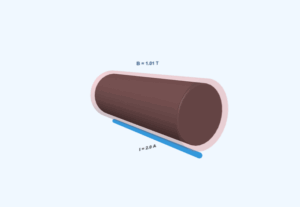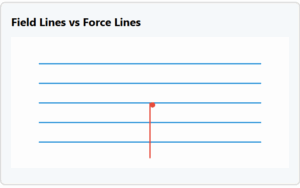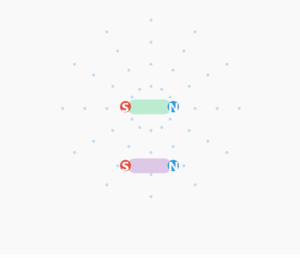Magnetic Field Lines Analysis
Example 5.3: Identifying Correct Magnetic Field Patterns
This simulation helps you analyze different field line patterns and identify which ones correctly represent magnetic fields.
Key Principles of Magnetic Field Lines
Example
Question:
Many diagrams in Fig. 5.6 show magnetic field lines (thick lines) wrongly. Point out what is wrong with them. Some may describe electrostatic field lines correctly—point out which ones.
Solution:
(a) Wrong. Magnetic field lines cannot emanate from a point. Field lines shown represent electric field of a long positively charged wire, not a magnetic field.
(b) Wrong. Magnetic field lines can never cross each other or form closed loops around empty space (unless enclosing current); figure is ambiguous.
(c) Right. Magnetic field lines are confined within a toroid, forming closed loops around the region containing current.
(d) Wrong. Field lines due to solenoid at ends and outside should not be completely straight—they must curve out at ends and form closed loops.
(e) Right. These are field lines of a bar magnet—lines go out of the north, into the south pole; net flux zero.
(f) Wrong. Cannot represent magnetic field—all field lines out of shaded plate violates magnetic flux conservation; actually shows electrostatic lines.
(g) Wrong. Magnetic field lines between two pole pieces cannot be precisely straight at the ends—some fringing is necessary by Ampere's law.



